I’m working on a Hyde Park Herald story about the Golden Lady. My guess is that I’m going to run out of room, so I thought I’d talk about some of her rivals during the 1893 World’s Columbian Exposition. Of course, she herself was a rival of the Statue of Liberty, which had recently been erected in New York Harbor. The fight to host the World’s Fair had been bitter, so the Chicago newspaper the Inter Ocean pointed out that Chicago’s statue had “won.” Of course, the Statue of the Republic was temporary and the Statue of Liberty was permanent, so Liberty “won” in the end.
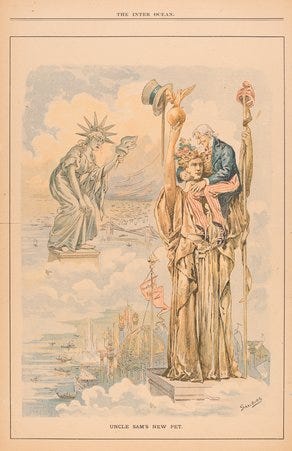
She had two competitors in the Grand Basin itself—the Columbian Fountain by MacMonnies and Diana, who spun on tiptoe at the top of the Agriculture Building.
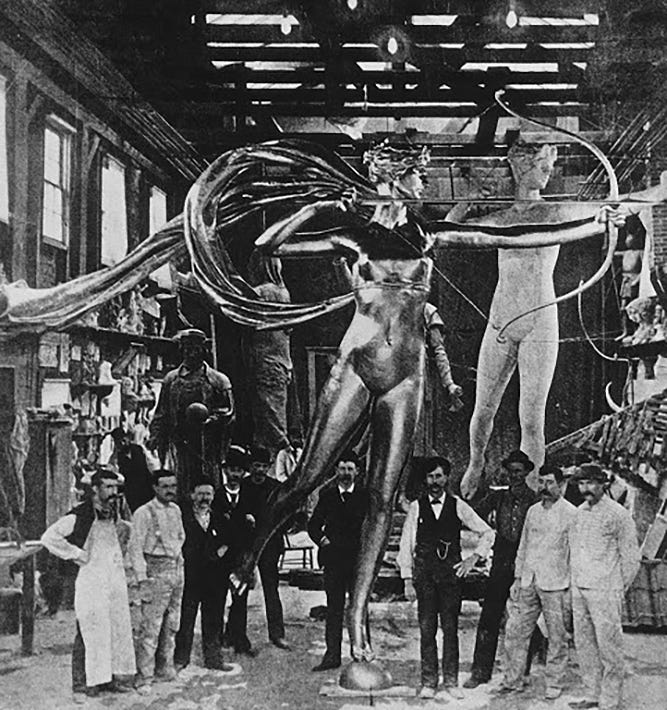
Augustus Saint Gaudens recycled weathervane on top of the Agriculture Building was definitely a topic of conversation. Unlike the other architectural statues, she was bronze, very shiny, and very naked. She was supposed to stand on top of Madison Square Garden but she was too big. Luckily, she was Diana, so fit the Classicism of the Grand Basin. The Agriculture building was designed by the architects of Madison Square Garden, so they shipped her off to Chicago.
The scale of the Grand Basin was just right. Her flying cape acted as a weathervane in the stiff winds off the lake. I’ve seen a description of her turning in the east wind in a newspaper article. She was somewhat unassuming during the day, but at night, when crowds oohed and aahed over the astounding show of electricity, the brilliant searchlight, would strike her. She shown out in all her shiny and naked glory. People talked about her a lot. All the other classical ladies were draped.

In the early stages of planning, once everyone agreed on the central Grand Basin, the managers wanted a grand fountain. People talked about the water that jetted everywhere and the colored lights at night, but I suspect the statue group itself was too busy and too allegorical for even the 1890s.
In the 19th century, the embodiment of the republic was known as Columbia, so in a sense, it’s also a statue of the Republic. Columbia is the one on top of the barge. Assorted arts and industries man the oars with a very muscular Time steering. The sea horses of commerce are pulling the barge.
I was transcribing some diaries of visitors to the fair as a citizen volunteer for the Newberry. People loved the fountains and lights and the statues not so much.
The Golden Lady was known variously as the Republic or America, but interestingly never Columbia, I suppose because Columbia was sailing across the basin toward her. There was an embodiment of a unified nation that was everywhere at the fair—Germania. There were chocolate Germanias and gorgeous colored tile Germanias, and a fountain to Germania. There was one Germania, however, who outlasted the fair and stood in Jackson Park until 1905.
I only learned about her because road construction on Lake Shore Drive in 2003 pulled out chunks of a concrete woman from the lagoon. I finally found out where she must have stood by studying a high-resolution map. I think she was in the area labeled Outside Exhibit of Germany in the hodge podge of exhibits south of the Court of Honor. She was a demonstration of a German concrete company’s prowess. To orient people familiar with the current park, the Administration Building, circled in gold on the map, is just west of where the Statue of the Republic replica is now.
Here she is. Unlike the Golden Lady, her sword is out. She has a shield and helmet. And she’s standing not far from the Krupp Building, which was showing off the largest cannon anyone had seen to that date.
When the rest of the fair was burned and dismantled, it apparently was too much bother to break up the concrete until a roadway needed to go through that section of the park.
In my searches for “Statue of the Republic,” I kept bumping into references to another one. The Statue of the French Republic sat in the French pavilion inside the Manufacturing and Liberal Arts building.

According to a guidebook called Picturesque World’s Fair, she was made of bluish bronze. One hand stops the passerbys in their tracks. Her unsheathed sword is somewhat awkwardly and dangerously held in her other hand along as she clasps the Rights of Man. So, liberté, égalité, fraternité or else!
The original of Jackson Park’s Golden Lady was much less bellicose. One hand upholds a globe to welcome the world. The other hand held a staff holding up the cap of liberty. Her crown of laurel leaves lit up at night. Her breastplate was the American eagle. There apparently is a visible hilt of a sword under her robes. Daniel Chester French, the sculptor, was modeling her on accounts of the immense statue of Athena that once graced the Acropolis.
People loved her.
A fun read about the fair is a novel Samantha at the World's Fair (1893) by Marietta Holley. Samantha is a backwoods farmer’s wife, who Holley uses to deliver satirical commentary and support women's rights and temperance reform. Susan B. Anthony and Frances Willard were among her fans. Sadly, Samantha was in the tradition of dialect novels at the time, though she isn’t as unreadable as some of them (*cough* The Grandissimes *cough*)
When Samantha sees the statue, she approves, particularly of the statue’s embrace of fashion reform:
But there wuz no high-headdedness, no tostin’ of her neck. No, fair and stately and serene as a dream Queen, she stood a fittin’ centre for the onspeakabe beauty of her surroundin’s….Why, as I looked on her, my emotions riz me up so, and seemed to expand my own size so, that I felt as if I too towered up so high that I could lock arms with her and walk off with her arm in arm….
The crown wore on top of her noble forehead wuz dretful appropriate to show what wuz inside of a woman’s head: for it wuz made of electric lights—flashin’ lights and strange, wrought of that mysterious substance that we don’t understand yet….
Her figger wuz noble, jest as majestic and perfect as the human form can be. And it stood up there jest as the Lord meant wimmen to stand, no lookin’ like a hour-glass or a mismire, but a good sensible waist on her, jest as human creeters ort to have….But to me one of the greatest and grandest uses of that noble figger wuz to stand up there a-preachin’ to more than a million wimmen daily of the beauty and symmetry of a perfect form. Just as the Lord made it before it wuz tortured down into deformity and disease by whalebones and cosset strings.
One day I did see two tall, spindlin’ fashionable-lookin’ wimmen a-lookin’ at it and one sez to the other: “Oh how sweet she would look in elbow sleeves and a tight-fittin polenay!” “Yes,” sez the other, “and a bellskirt ruffled almost to the waist and a Gainsboro hat and a parasol.” …I sez to myself “some wimmen are born fools, some achieve foolishness, and some have foolishness thrust upon ‘em.”




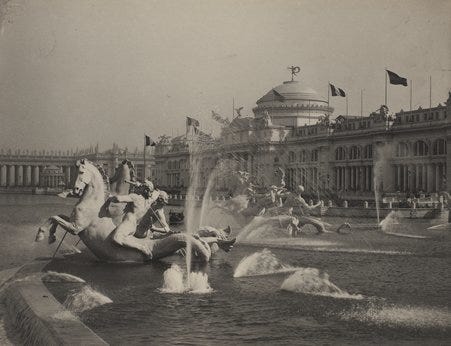
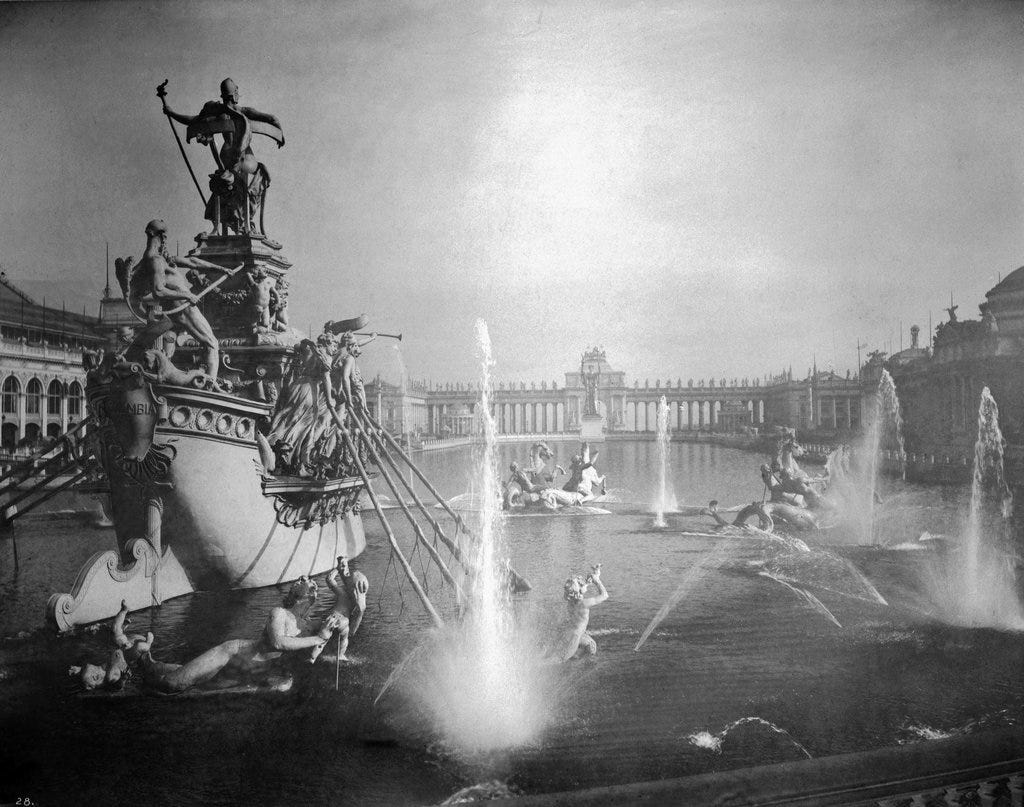
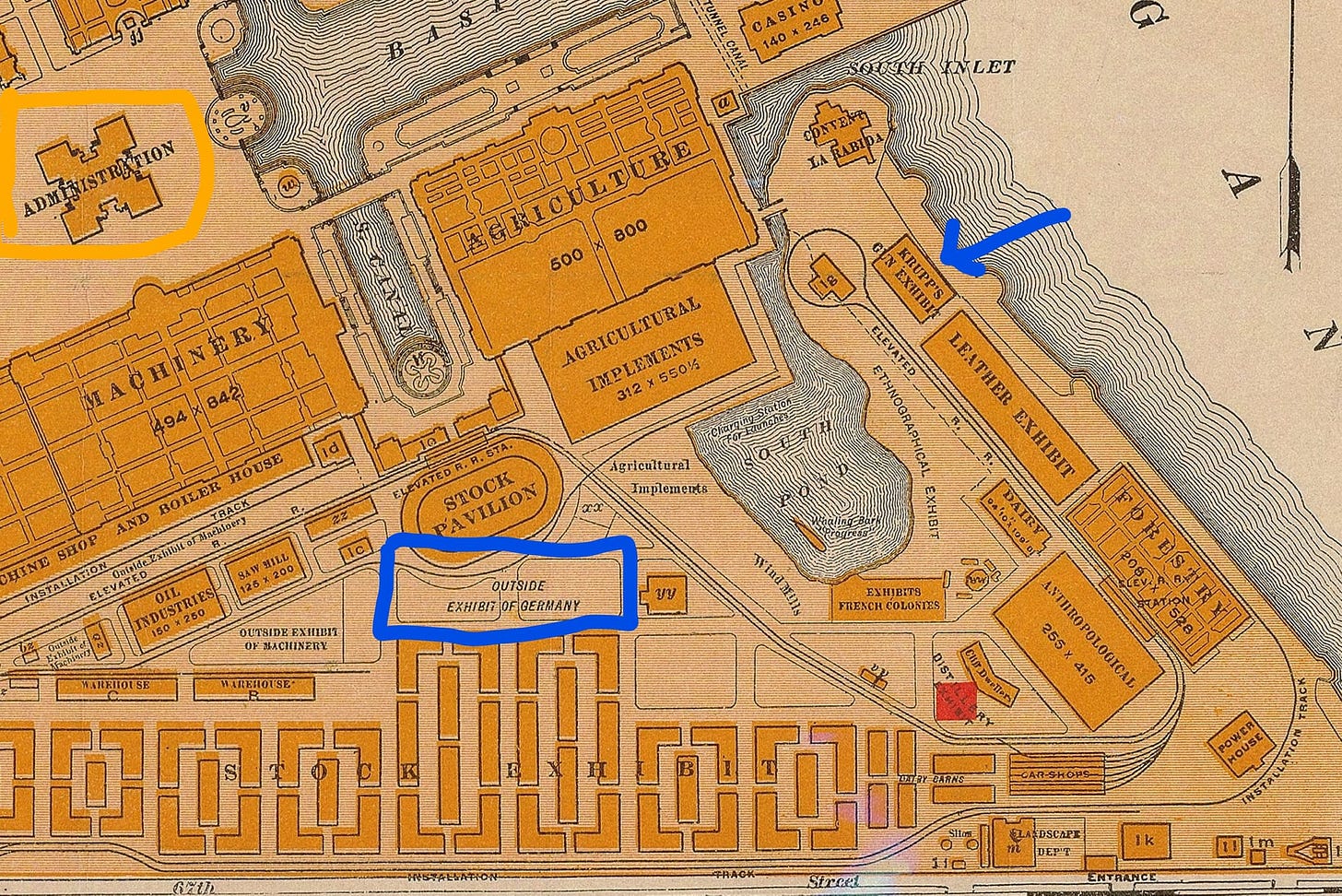

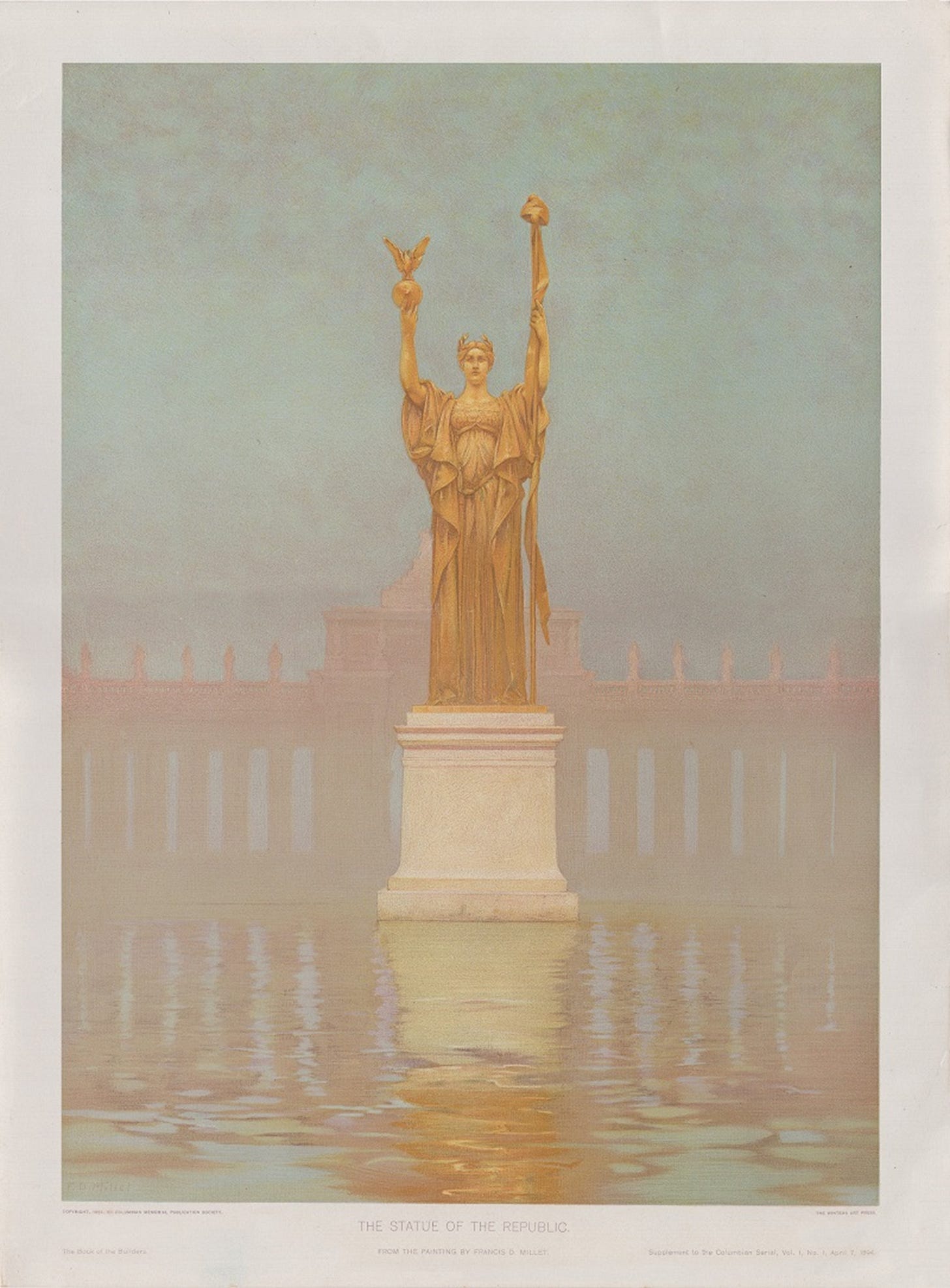

I always loved that statue. This history about it makes it even more amazing.
Hahaha!!! Knowing your family, total agreement.